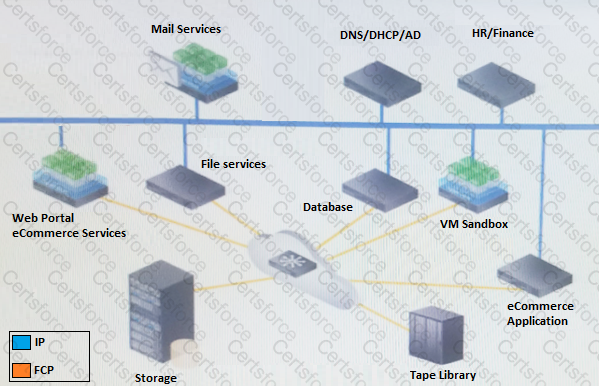Which authentication and authorization feature is critical for service providers when supporting multi-tenancy?
You have the following requirements for a CMP solution:
Lower acquisition costs of software
Control over deployment of software release cycles
Option to have paid support
What type of CMP solution should you recommend?
A company has the following requirements:
Modular building blocks
Scalability
In-house management solution
No physical SAN
What type of infrastructure would meet these requirements?
What is a packaged PaaS Solution?
An organization wants to deploy cloud applications using block storage. The architect has included a HCI
solution in the cloud design. Which requirements must have led to including this solution in the design?
You are designing a cloud backup solution. Consider the following requirements when sizing the backup
target:
Total amount of data to be backed up = 2 TB (2000 GB)
Full backup once a week
Retention period for full backups = 2 months
Daily incremental backups (assuming an average 10% change in data)
Retention period for incremental backups = 1 month
No Compression or deduplication
Number of backup copies = 1
What is the total capacity, in GB, required for the backup target to accommodate the backups?
In which cloud design lifecycle phase is business value analysis performed?
SPECIAL INSTRUCTIONS REMINDER
The remaining questions are associated with two cases.
Each case has an introductory, descriptive passage (case text) that describes background information and requirements for a specific cloud based design. And each case has a set of six related, randomized questions. You will need to read the case text in order to answer the related questions correctly.
Given that there are two cases with six scored questions each, the total number of case-based scored questions is 12.
When you display each questions you can easily review the related case text in a pop-up window by clicking on the “Case” icon (shown below)
Case 4
Refer to the exhibit.

Your company is currently using a traditional SAN storage network. The server infrastructure is partially virtualized. There is a public cloud in place that is used to test development and application migration to cloud.
Business requirements:
Consolidate the network, storage, and compute resources
Simplify network management and storage provisioning
Maintain application performance
Need to share resources to reduce cost and improve efficiency
Other considerations:
Monitoring of protection SLAs
All transactions must be logged for auditing review
Users are validated using internal credentials
Refer to Case 4.
You are designing a private cloud to use VLANs to support compute-to-compute connectivity. The IT team has added a requirement to simplify the configuration management within the infrastructure.
What is a limitation related to VLANs for this requirement?
Which services are typically offered by cloud service providers?
An organization uses Microsoft Active Directory (AD) for service authentication in their private cloud. They want to use the same authentication source for services in the public cloud. External employees access services in both clouds and need to authenticate with AD.
The organization wants to minimize and secure network traffic. Which solution will address these requirements?